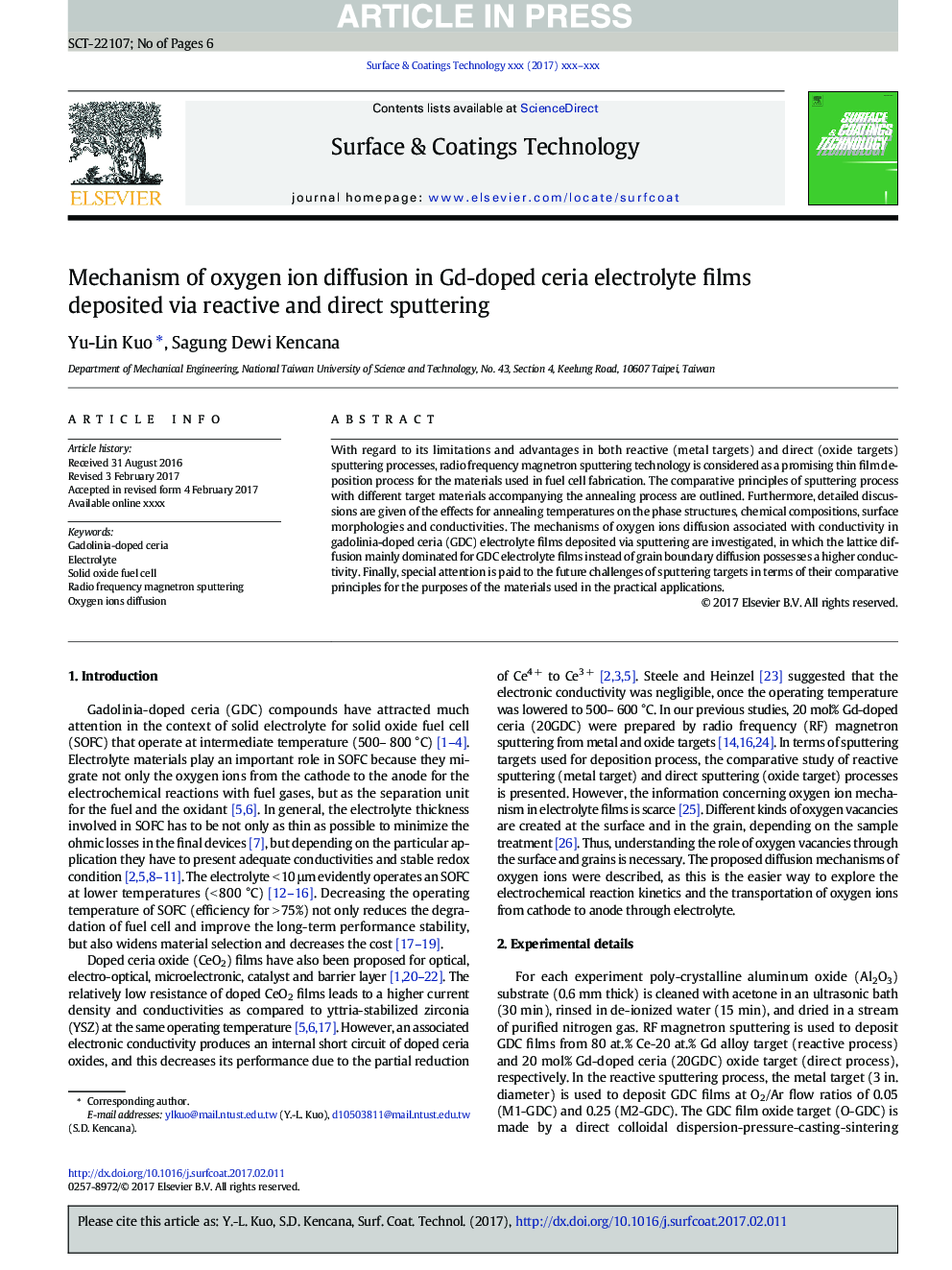| Article ID | Journal | Published Year | Pages | File Type |
|---|---|---|---|---|
| 5464937 | Surface and Coatings Technology | 2017 | 6 Pages |
Abstract
With regard to its limitations and advantages in both reactive (metal targets) and direct (oxide targets) sputtering processes, radio frequency magnetron sputtering technology is considered as a promising thin film deposition process for the materials used in fuel cell fabrication. The comparative principles of sputtering process with different target materials accompanying the annealing process are outlined. Furthermore, detailed discussions are given of the effects for annealing temperatures on the phase structures, chemical compositions, surface morphologies and conductivities. The mechanisms of oxygen ions diffusion associated with conductivity in gadolinia-doped ceria (GDC) electrolyte films deposited via sputtering are investigated, in which the lattice diffusion mainly dominated for GDC electrolyte films instead of grain boundary diffusion possesses a higher conductivity. Finally, special attention is paid to the future challenges of sputtering targets in terms of their comparative principles for the purposes of the materials used in the practical applications.
Related Topics
Physical Sciences and Engineering
Materials Science
Nanotechnology
Authors
Yu-Lin Kuo, Sagung Dewi Kencana,
